130, Suyeonggangbyeon-daero,
Haeundae-gu, Busan, Republic of Korea,
48058
DATABASE
Ko-pick: Cooling Off with K-Horror
- Writerby Kobiz
- View1429
Akin to Korean cinema, Korea’s weather is known for its extremes. During the winter months, temperatures can plummet to below -20 degrees Celsius in Gangwon Province with meters of snow blanketing the mountains multiple times over the season. In the summer, the oppressive heat and humidity can make it unsufferable that has become even more pronounced with climate change.
Seoul this summer has experienced a record 37 tropical nights surpassing the 36 days back in 1994. 35 of those this year were consecutive. A tropical night is defined when morning lows don’t drop below 25 degrees Celsius. With the highs reaching well above 30 degrees, it’s been a sizzling summer that is forecast to continue into September.
An effective way to beat the heat is to head to an air-conditioned cinema even if it is for a brief respite. Traditionally, this has been horror films – the chills and thrills of the genre have presented audiences with an antidote to the blistering heat and extremely muggy conditions. Indeed, the Bucheon International Fantastic Film Festival (BIFAN) that programs plenty of horror titles takes place in July as the summer is approaching its peak.
This week, therefore, we will delve into the world of Korean horror that has come in a variety of forms and styles over the course of the history of Korean cinema. Early examples include Lee Man-hee’s psychological horror The Devil’s Stairway (1964), Lee Yong-min’s horror A Bloodthirsty Killer (1965), A Public Cemetery of Wol-ha (1967) directed by Kwon Cheol-hwi and Woman’s Wail (1986) helmed by Lee Hyeok-su.
K-horror is closely associated with some of the genre cinema that emerged in the 1990s and 2000s. Whispering Corridors (1998) is widely considered as one of the most influential Korean films of the contemporary era ushering in one of Korea’s longest lasting series. Later titles include Yoon Jong-chan’s unsettling Gooseflesh (2001), Ahn Byeong-ki’s supernatural The Phone (2002), Kim Jee-woon’s seminal A Tale of Two Sisters (2003), Kong Su-chang’s psychological war film R-Point (2004) and the more recent Gonjiam: Haunted Asylum (2017). For this edition of Ko-pick, we’ll profile these titles and more as we navigate how the genre has evolved.
The revenge-driven ghost is an established trait in traditional Korean horror, which is evident in Kwon Cheol-hwi’s A Public Cemetery of Wol-ha (1967) that struck a chord with audiences in 1967. Pulling in more than 50,000 viewers in Seoul, it’s one of the most successful early Korean horror films though until more recently largely forgotten.
The story is set in the colonial period, in the 1930s when a woman working as a Courtesan, Wol-ha (Kang Mi-ae) and marries Han-soo (Park No-shick) but she is later poisoned by the maid and her accomplices as she seeks to take control of the household as the new wife. Subsequently the ghost of Wol-ha seeks retribution.
By today’s standards, the production values might seem off-putting to some audiences, but as an early gothic horror film with its interesting use of colors and narrative threads, it’s a gripping feature. It also features a thrilling climax in the final 30 minutes where more of the horror elements of the story play out.

Whispering Corridors & Memento Mori
Students looking to understand the genre of Korean horror are invariably introduced to Park Ki-hyung’s Whispering Corridors & Memento Mori(1999) directed by Kim Tae-yong and Min Kyu-dong. Both set in all-girl high schools are iconic for not only delivering the scares but also for dealing with complex and sometimes taboo themes that have come to characterize some of the most compelling titles of the genre.
Whispering Corridors tackles the issues of authoritarianism in and out of the classroom and the wider education system, while Memento Mori is significant for featuring lesbian characters – it is one of the first commercial Korean films to do so – as it tells the story of two girls that attended the same school.
While the first two films of this series standout as the most accomplished, many of the other films from the series have also resonated with fans of Korean horror – Whispering Stairs (2003), The Voice (2005), A Blood Pledge (2009) and Whispering Corridors: The Humming (2020), the latest instalment.
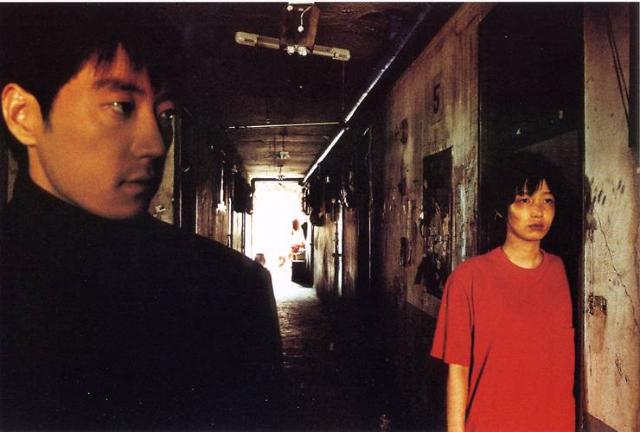
Horror can come in different styles. There are no ghosts hiding under beds or in cupboards in Yoon Jong-chan’s Gooseflesh (2001). Instead, there is undeniable tension and unease that is gradually but tangibly captured in the performances of Kim Myung-min and the late Jang Jin-young, along with their surroundings, an apartment building in disrepair.
Locations, of course, in horror films are almost like characters, crucial in capturing the mood sometimes reflecting what’s going on in the characters minds. The desperately rundown apartment is central to the narrative in Gooseflesh conveying the psychological horrors of the protagonists as it focuses on the relationship between a taxi driver and his neighbor.
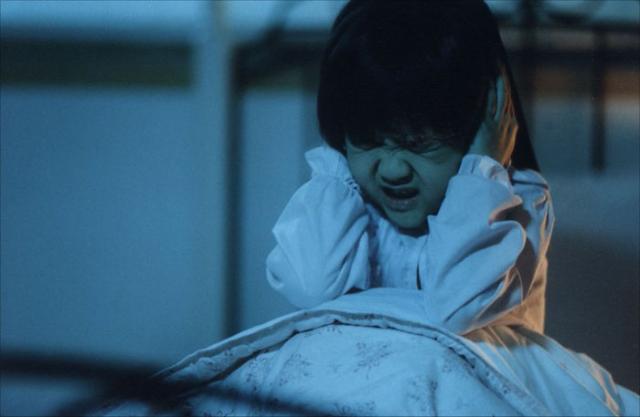
Coming a year after Gooseflesh that was released in the summer, Ahn Byeong-ki’s Phone also hit screens in time to combat the summer heat. Both films were also distributed by Disney’s Buena Vista International Korea illustrating how the studio was active in the Korean market two decades before launching Disney Plus in the country in 2021.
Starring Ha Ji-won who also featured in Ahn’s first horror film Nightmare (2000), she plays an investigative reporter who changes her phone number after receiving menacing calls. She then discovers that the previous owners of that number had died after it belonged to a missing teenager.
Compared to Gooseflesh, Phone is more of a conventional horror with an abundance of jump scares that are enormously effective. As such, it was also released in international markets including the UK where along with some other Korean titles like Oldboy (2003), it was branded as “Asia Extreme” under the now defunct, Tartan Films DVD label.
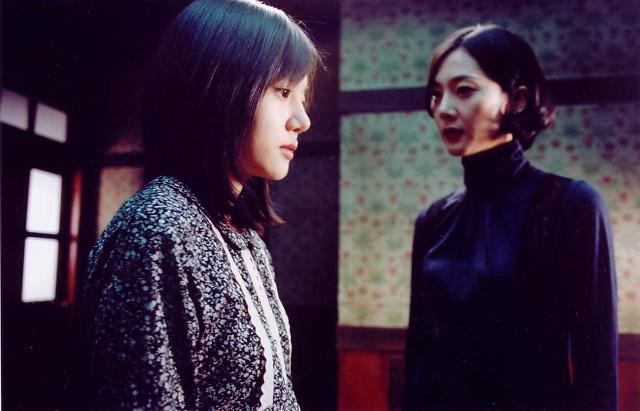
One of the most revered Korean horror films of the contemporary era, Kim Jee-woon’s A Tale of Two Sisters (2003) might not need an introduction to many. Based on the famous folktale, Janghwa, Hongryeon (the Korean title of the film), it centers on two young sisters played by Im Soo-jung and Moon Geun-young and the troubled relationship with their stepmother (Yum Jung-ah).
Largely set in a house located in the countryside, Kim’s meticulous attention to mise-en-scene makes this a richly stylized horror film that also has plenty of layers owing to Kim’s script and the absorbing performances by the entire cast. Like other psychological horrors, it takes us into the mind of the film’s leading protagonist (Im Soo-jung) as she faces her past and guilt.
Similar to Phone, it was released in various territories including the UK, in what was one of the early phases of Korea’s content industry making inroads overseas.
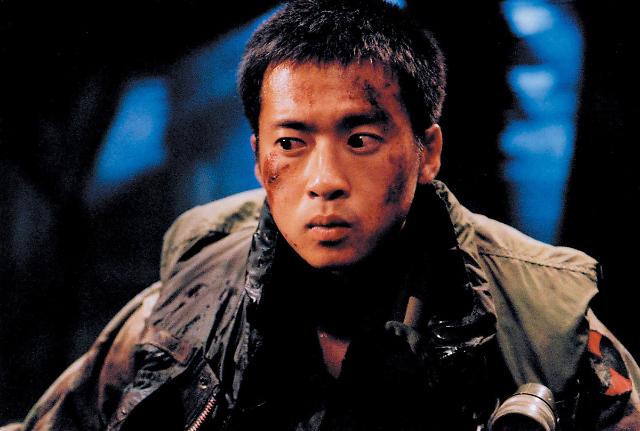
Released in the summer of 2004, Kong Su-chang’s R-Point (2004) turns to the Vietnam War in 1972 where a platoon is sent to a location known as R-Point after receiving mysterious messages from a unit who had vanished six months earlier. The horrors of R-point come to haunt the soldiers dispatched to find out what happened. The film stars Kam Woo-sung, Lee Sun-Kyun and Son Byung-ho.
Korea’s involvement in the Vietnam War is rarely depicted in Korean cinema but when it does, it makes a meaningful impression – Chung Ji-young’s White Badge (1992) is another example, which Kong co-wrote – as it conveys the horrors of war. Like much of the genre, it’s unsettling in its execution but also seeks to explore themes that are not as evident elsewhere in Korean films.
The feature was partly shot in Cambodia, and it was also filmed at a bamboo forest, Juknokwon, located near Gwangju that was ideal to depict some of the locations in the film.
Certainly layered, brothers Jung Sik and Jung Bum-shik’s colonial era horror film Epitaph (2007) is unique in its portrayal of Korea in the 1940s. Told in different segments, beginning in the late 1970s when a doctor finds a photo album before flashing back to the early 1940s where the now young intern (Jin Goo) falls in love with a dead woman. There are also other mysterious events: a young girl, a survivor of a car accident, is haunted by ghosts and there is also a series of homicides with a killer targeting Japanese soldiers.
Set during a period that was heavily influenced by Japanese culture, it captures the complex sentiments at the time that is told through deft writing and superb staging. This includes a scene when the intern is pulled into a mortuary cabinet that is containing the body of the deceased woman, which is one of the most terrifying but engrossing scenes in modern Korean horror cinema with horror juxtaposed with colorful and beautiful imagery.
The film sold an underwhelming 678,000 tickets in the summer of 2007 coming at a time when the industry was experiencing a downturn. But it was re-released in 2021 reflecting the affection the film has since generated.
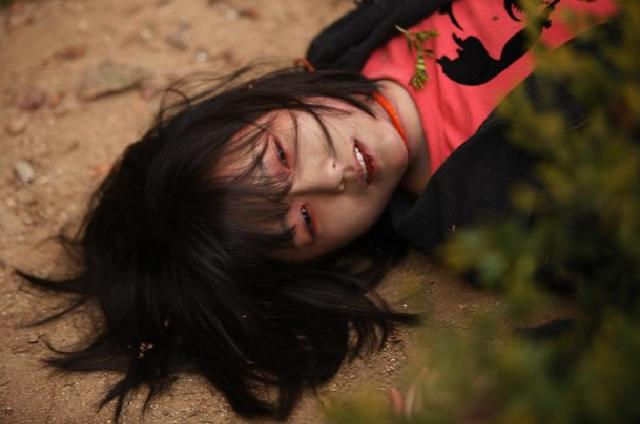
Possessed (aka Living Death)
Somewhat overlooked compared to the more famous offerings of Korean horror, Lee Yong-ju’s Possessed (2009) tackles the subject of religion that is ubiquitous in Korea as it follows a woman (Nam Sang-mi) who gets a call from her a mother (Kim Bo-yeon), now a devout Christian, that her younger sister (Shim Eun-kyung) has disappeared. Meanwhile strange things start to happen with bodies pilling up as the woman and a police detective investigate what happened.
Dealing with Christianity and shamanism along with the conflicts between them, it generates a captivating synergy, while it’s also frightening in places. Ultimately, with its strong craftsmanship and performances, it contains all the elements associated with the best the genre has to offer despite its lackluster performance at the box office accumulating a disappointing 251,000 admissions.
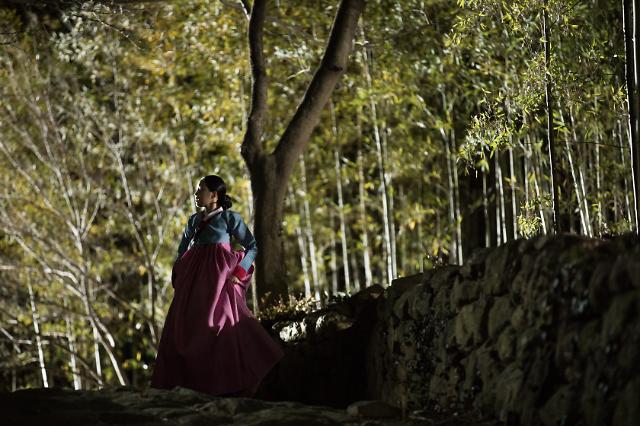
By the 2010s, Korean horror in the contemporary era had passed its heyday. Films were still being released in the summer, but they were less successful than a decade earlier and subsequently fewer of them, especially films financed by the studios. Nevertheless, there were titles still being released, which includes The Wrath (2018) directed by Yoo Young-sun, a remake of the 1986 film, Woman’s Wail.
Set in the Joseon era, Yoo Young-sun’s The Wrath takes place in the household of a high-ranking official, which has been plagued by an evil spirit that haunts the house after three sons die on their first day of marriage. The film centers on Ok-bun (Son Na-eun) who is impregnated with a child of the third son and tries to protect the unborn child as she faces hostility from the other women in the family.
The film, which also features Seo Young-hee as the high-ranking official’s wife incorporates a more traditional horror story with its vengeful ghost along with characteristics of the period drama with its setting and characters.
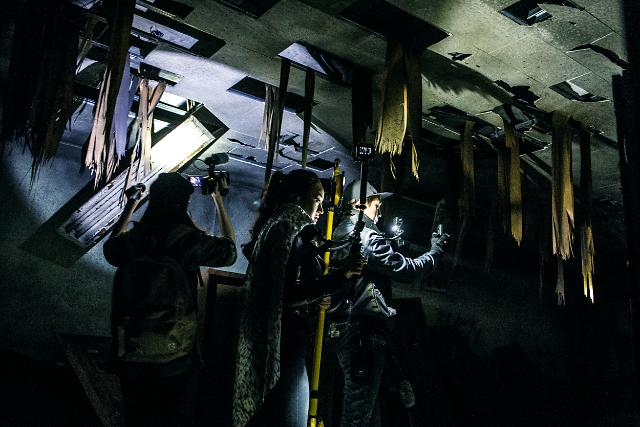
Also released in 2018 but far more successful commercially was Jung Bum-shik’s Gonjiam: The Haunted Asylum (2017). Unusually, for a horror title in Korea, it hit screens in March when young people are attending school and university, its key demographic. Yet it performed well beyond expectations selling 2.6 million tickets. Some of its success was attributed to the social media campaign with viewers also posting about their experiences on SNS echoing the film’s found-footage style.
Centering on an abandoned psychiatric hospital, the film sees a group hired by an internet broadcaster to go out and explore the asylum and capture it on camera only to find themselves in grave danger. It stars Wi Ha-joon, Park Ji-hyun, Moon Ye-won, Oh Ah-yeon and Park Sung-hoon.
Quite different compared to other Korean horror films that came before it, which partly also explains its appeal but it also demonstrates the appetite there is for horror when it is done in way that attracts younger crowds.
Editted by Shim Eunha
Written by Jason Bechervaise

























